Modeling and Control of Reconfigurable Quadrotors Based on Model Reference Adaptive Control
Abstract
1. Introduction
2. Problem Formulation
3. Modeling and Control Law Design
3.1. Kinematic Model and Dynamic Model
3.2. Model of Pure Translational Reconfiguration
3.3. Model of Pure Rotational Reconfiguration
3.4. Model of Translational Plus Rotational Reconfiguration
3.5. Model Reference Adaptive Control Law Design
4. Simulation and Analysis
4.1. Initialization of Simulation
4.2. Simulation Based on MRAC
4.3. Simulation Result
5. Conclusions
Author Contributions
Funding
Data Availability Statement
Conflicts of Interest
References
- Bangura, M.; Hou, X.; Allibert, G.; Mahony, R.; Michael, N. Supervisory Control of Multirotor Vehicles in Challenging Conditions Using Inertial Measurements. IEEE Trans. Robot. 2018, 34, 1490–1501. [Google Scholar] [CrossRef]
- Bauersfeld, L.; Spannagl, L.; Ducard, G.; Onder, C. MPC Flight Control for a Tilt-Rotor VTOL Aircraft. IEEE Trans. Aerosp. Electron. Syst. 2021, 57, 2395–2409. [Google Scholar] [CrossRef]
- Borkar, A.V.; Hangal, S.; Arya, H.; Sinha, A.; Vachhani, L. Reconfigurable Formations of Quadrotors on Lissajous Curves for Surveillance Applications. Eur. J. Control 2020, 56, 274–288. [Google Scholar] [CrossRef]
- Bucki, N.; Mueller, M.W. Design and Control of a Passively Morphing Quadcopter. In Proceedings of the 2019 IEEE International Conference on Robotics and Automation, Montreal, QC, Canada, 20–24 May 2019. [Google Scholar]
- D’Sa, R.R. Design of a Transformable Unmanned Aerial Vehicle. Ph.D. Thesis, University of Minnesota, Minneapolis, MN, USA, 2020. [Google Scholar]
- Chen, Y.; Wang, Z.; Lyu, Z.; Li, J.; Yang, Y.; Li, Y. Research on Manipulation Strategy and Flight Test of the Quad Tilt Rotor in Conversion Process. IEEE Access 2021, 9, 40286–40307. [Google Scholar] [CrossRef]
- Craig, W.; Yeo, D.; Paley, D.A. Geometric Attitude and Position Control of a Quadrotor in Wind. J. Guid. Control Dyn. 2020, 43, 870–883. [Google Scholar] [CrossRef]
- Dehkordi, M.D.; Danesh, M. Positionable Rotor Quadrotor: Dynamic Modeling and Adaptive Finite-Time Sliding-Mode Controller Design. J. Guid. Control Dyn. 2022, 45, 424–433. [Google Scholar] [CrossRef]
- Ding, C.; Lu, L. A Tilting-Rotor Unmanned Aerial Vehicle for Enhanced Aerial Locomotion and Manipulation Capabilities: Design, Control, and Applications. IEEE/ASME Trans. Mechatron. 2021, 26, 2237–2248. [Google Scholar] [CrossRef]
- Falanga, D.; Kleber, K.; Mintchev, S.; Floreano, D.; Scaramuzza, D. The Foldable Drone: A Morphing Quadrotor that Can Squeeze and Fly. IEEE Robot. Autom. Lett. 2019, 4, 209–216. [Google Scholar] [CrossRef]
- Gandhi, N.; Saldana, D.; Kumar, V.; Phan, L.T.X. Self-Reconfiguration in Response to Faults in Modular Aerial Systems. IEEE Robot. Autom. Lett. 2020, 5, 2522–2529. [Google Scholar] [CrossRef]
- Hess, R.A.; Wells, S.R. Sliding Mode Control Applied to Reconfigurable Flight Control Design. J. Guid. Control Dyn. 2003, 26, 452–462. [Google Scholar] [CrossRef]
- Cutler, M.J. Design and Control of an Autonomous Variable-Pitch Quadrotor Helicopter. Master’s Thesis, Massachusetts Institute of Technology, Cambridge, MA, USA, 2012. [Google Scholar]
- Hu, D.; Pei, Z.; Shi, J.; Tang, Z. Design, Modeling and Control of a Novel Morphing Quadrotor. IEEE Robot. Autom. Lett. 2021, 6, 8013–8020. [Google Scholar] [CrossRef]
- Kulkarni, M.; Nguyen, H.; Alexis, K. The Reconfigurable Aerial Robotic Chain: Shape and Motion Planning. IFAC-PapersOnLine 2020, 53, 9295–9302. [Google Scholar] [CrossRef]
- Li, B.; Ma, L.; Wang, D.; Sun, Y. Driving and Tilt-Hovering—An Agile and Maneuverable Aerial Vehicle with Tiltable rotors. IET Cyber-Syst. Robot. 2021, 3, 103–115. [Google Scholar] [CrossRef]
- Mofid, O.; Mobayen, S. Adaptive Sliding Mode Control for Finite-Time Stability of Quad-Rotor UAVs with Parametric Uncertainties. ISA Trans. 2018, 72, 1–14. [Google Scholar] [CrossRef] [PubMed]
- Marques, F.M.M.; de Assis, P.A.Q.; Neto, R.M.F. Position Tracking of a Tilt-Rotor Quad-copter with Small Attitude Variation Using Model Predictive Control. In Proceedings of the AIAA Aviation Forum, Virtual Event, 15–19 June 2020. [Google Scholar]
- Niemiec, R.; Gandhi, F.; Singh, R. Control and Performance of a Reconfigurable Multicopter. J. Aircr. 2018, 55, 1855–1866. [Google Scholar] [CrossRef]
- Outeiro, P.; Cardeira, C.; Oliveira, P. Multiple-Model Adaptive Control Architecture for a Quadrotor with Constant Unknown Mass and Inertia. Aerosp. Sci. Technol. 2021, 117, 106899–106912. [Google Scholar] [CrossRef]
- Pose, C.D.; Giribet, J.I.; Mas, I. Fault Tolerance Analysis for a Class of Reconfigurable Aerial Hexarotor Vehicles. IEEE/ASME Trans. Mechatron. 2020, 25, 1851–1858. [Google Scholar] [CrossRef]
- Seo, J.; Paik, J.; Yim, M.; Robotics, M.R. Annual Review of Control. Robot. Auton. Syst. 2019, 2, 63–88. [Google Scholar] [CrossRef]
- Wang, N.; Deng, Q.; Xie, G.; Pan, X. Hybrid Finite-Time Trajectory Tracking Control of a Quadrotor. ISA Trans. 2019, 90, 278–286. [Google Scholar] [CrossRef]
- Yang, D.; Li, Z.; Zhou, P.; Lu, J. Control System Design for Tiltable Quad-rotor with Propeller Failure. In Proceedings of the 2020 Chinese Automation Congress, Shanghai, China, 6–8 November 2020; pp. 7473–7478. [Google Scholar]
- Zhang, S. Development of Unconventional Unmanned Aerial Vehicle with Tilt-Rotor Platform. Ph.D. Thesis, National University of Singapore, Singapore, 2018. [Google Scholar]
- Zhao, N.; Luo, Y.; Deng, H.; Shen, Y. The deformable quad-rotor: Design, Kinematics and Dynamics Characterization, and Flight Performance Validation. In Proceedings of the 2017 IEEE/RSJ International Conference on Intelligent Robots and Systems, Vancouver, BC, Canada, 24–28 September 2017. [Google Scholar]
- Zheng, P.; Tan, X.; Kocer, B.B.; Yang, E.; Kovac, M. TiltDrone: A Fully-Actuated Tilting Quadrotor Platform. IEEE Robot. Autom. Lett. 2020, 5, 6845–6852. [Google Scholar] [CrossRef]
- Lee, J.; Lee, D.; Kim, J.; Kim, D.; Jang, I.; Kim, H.J. Fully Actuated Autonomous Flight of Thruster-Tilting Multirotor. IEEE/ASME Trans. Mechatron. 2021, 26, 765–776. [Google Scholar] [CrossRef]
- Anaswamy, A.M. Adaptive Control and Intersections with Reinforcement Learning. Annu. Rev. Control Robot. Auton. Syst. 2023, 6, 65–93. [Google Scholar] [CrossRef]
- Dydek, Z.T. Adaptive Control of Unmanned Aerial Systems. Ph.D. Thesis, Massachusetts Institute of Technology, Cambridge, MA, USA, 2010. [Google Scholar]
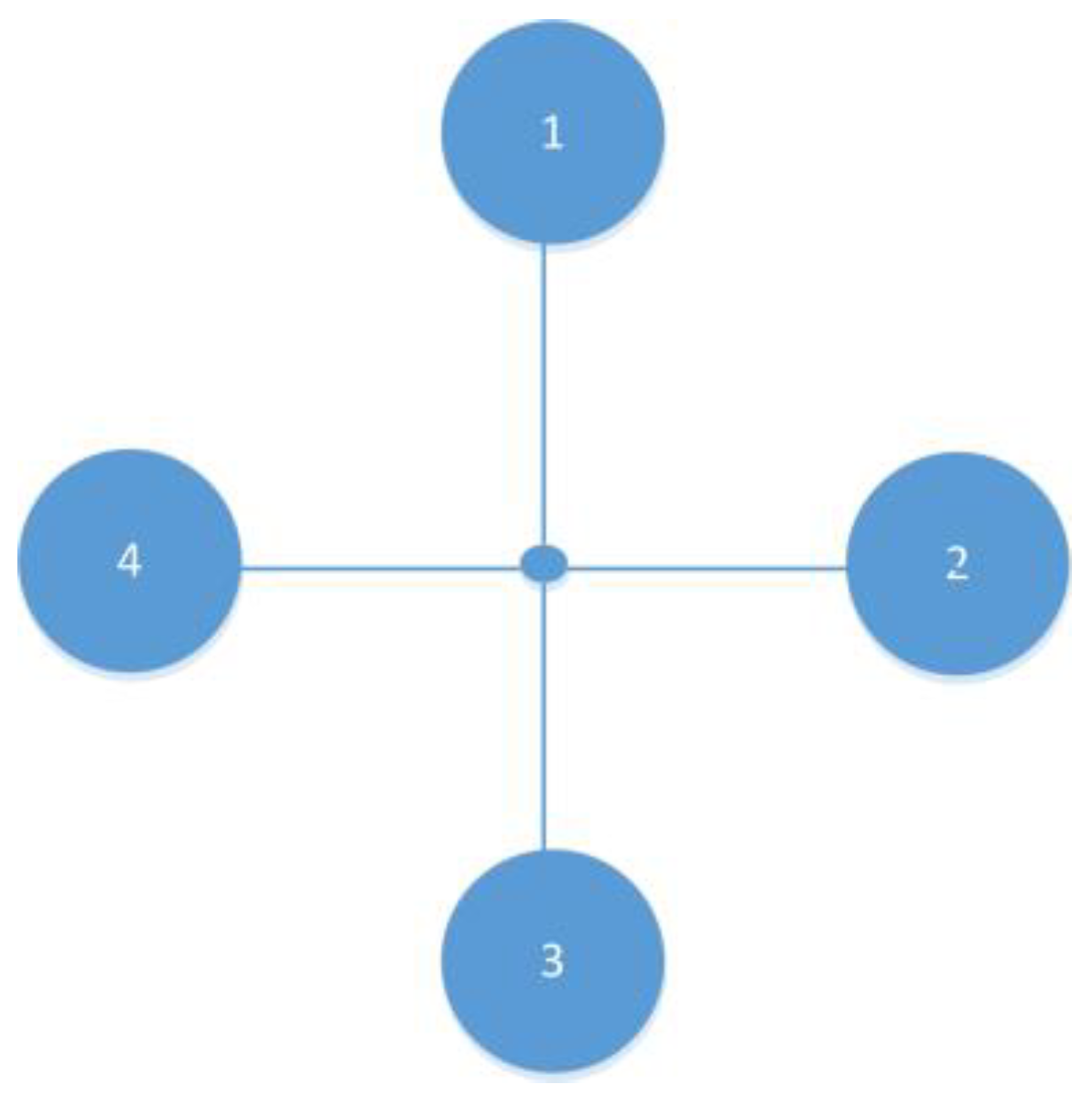
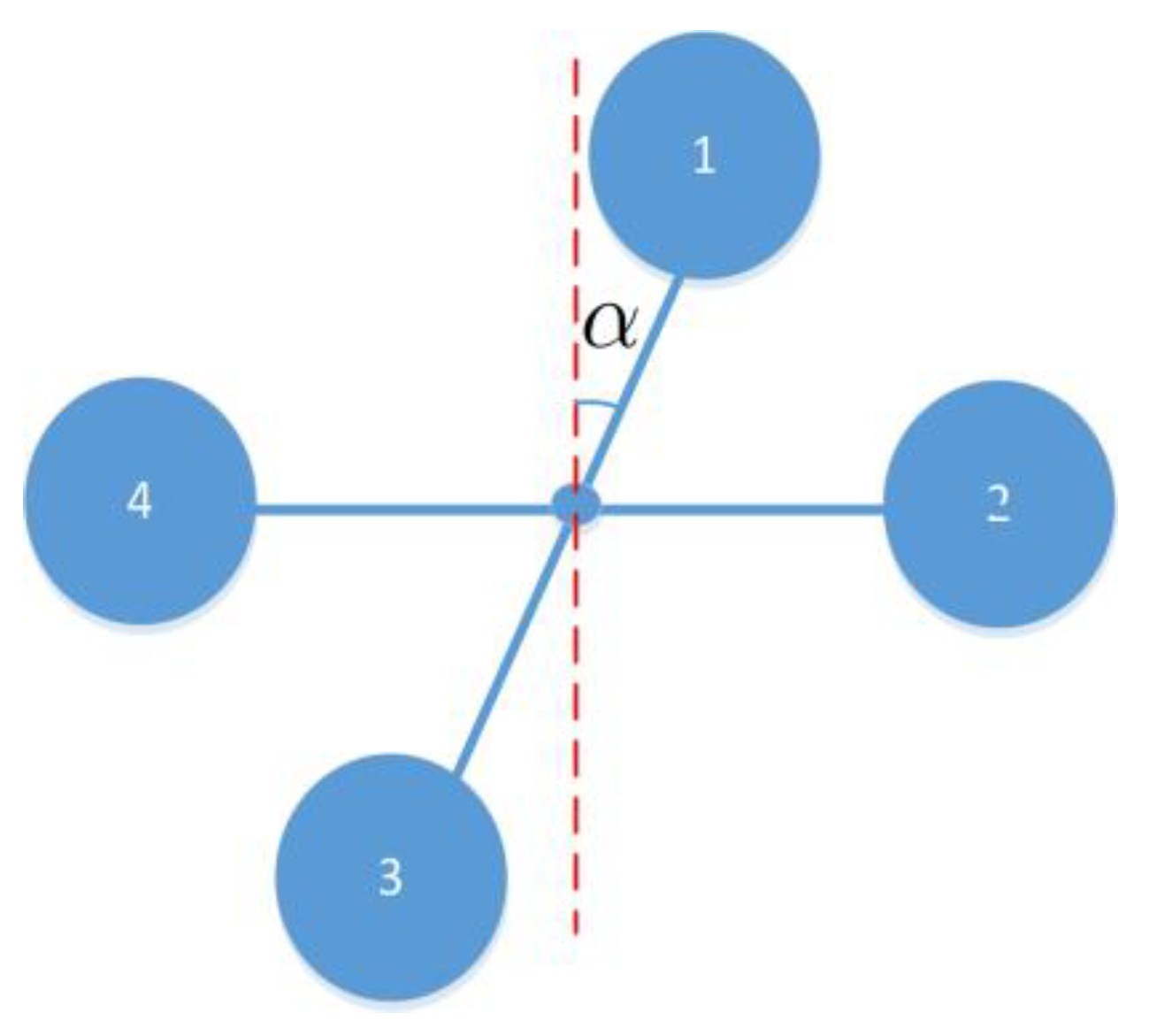
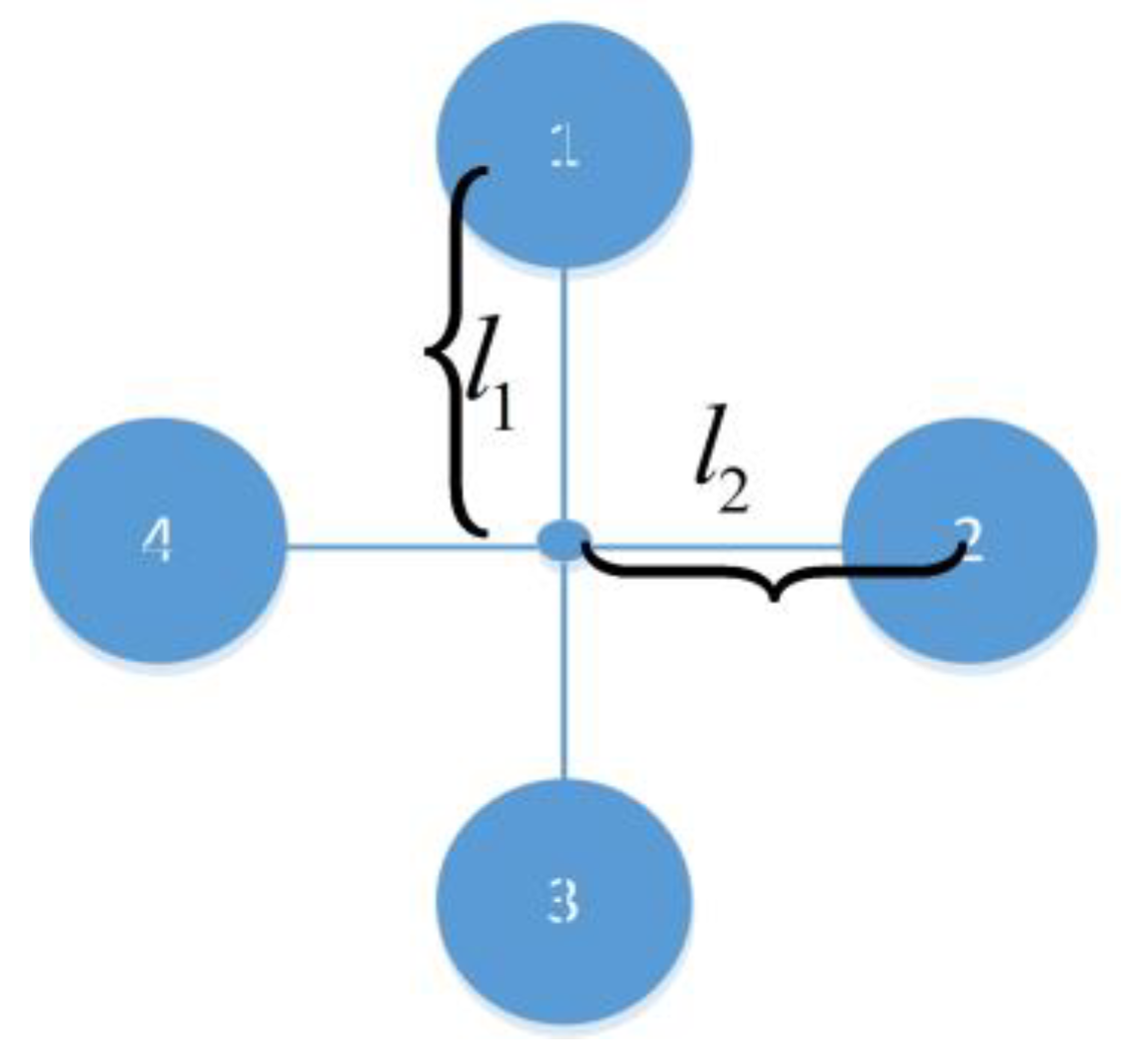

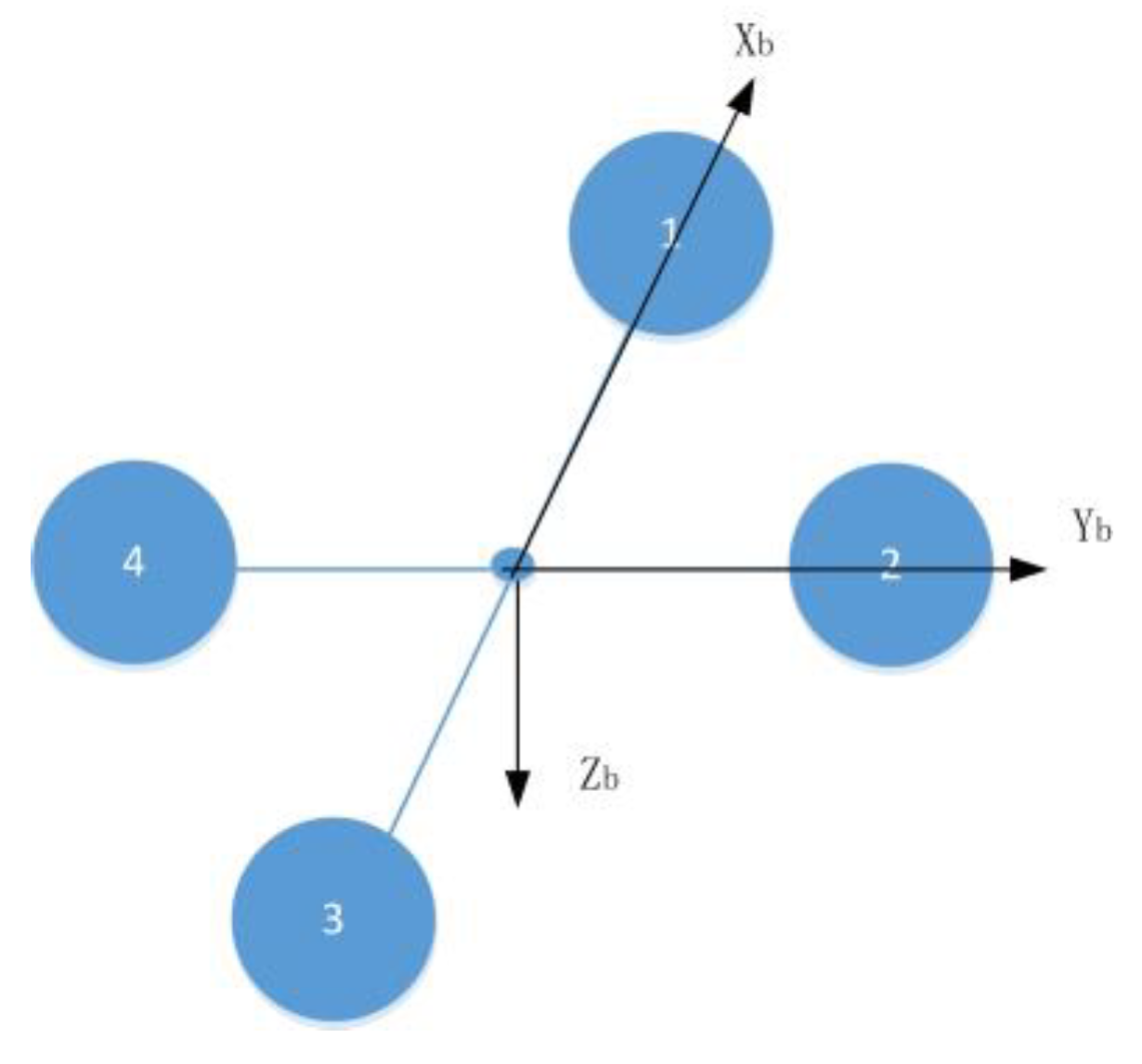
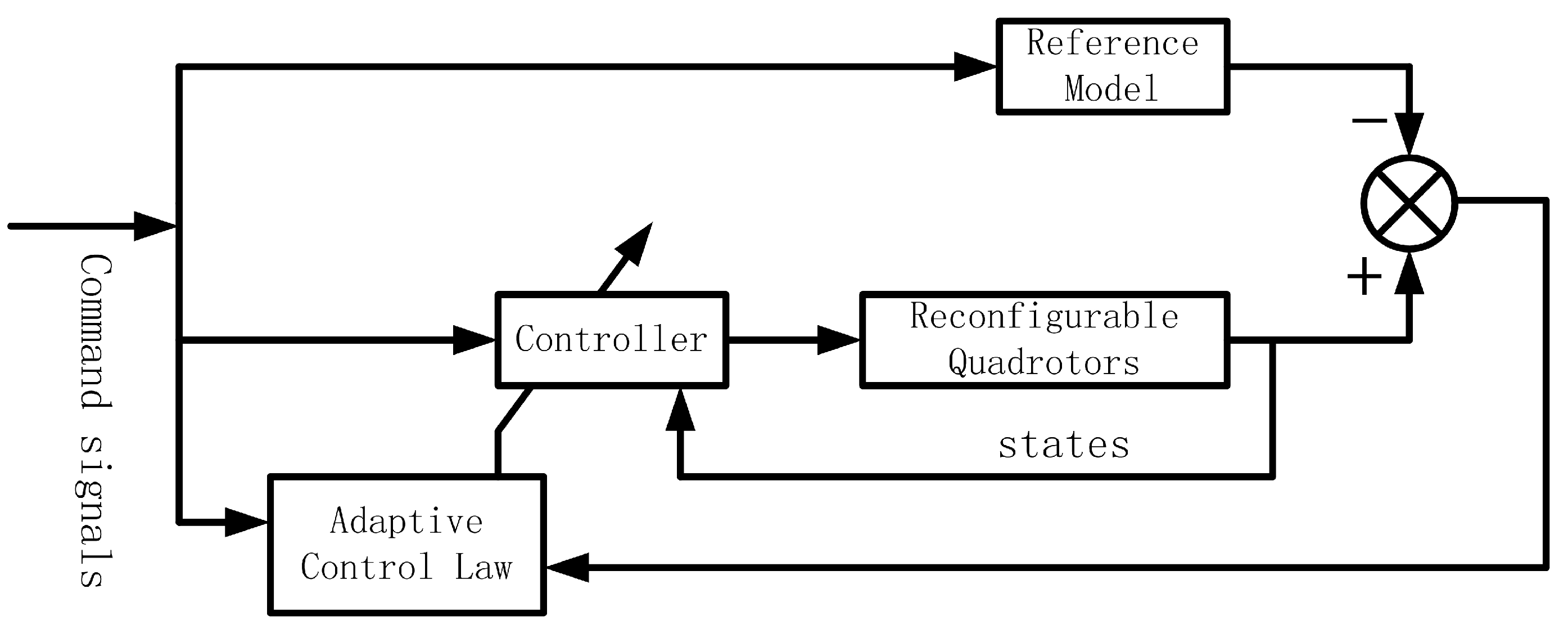
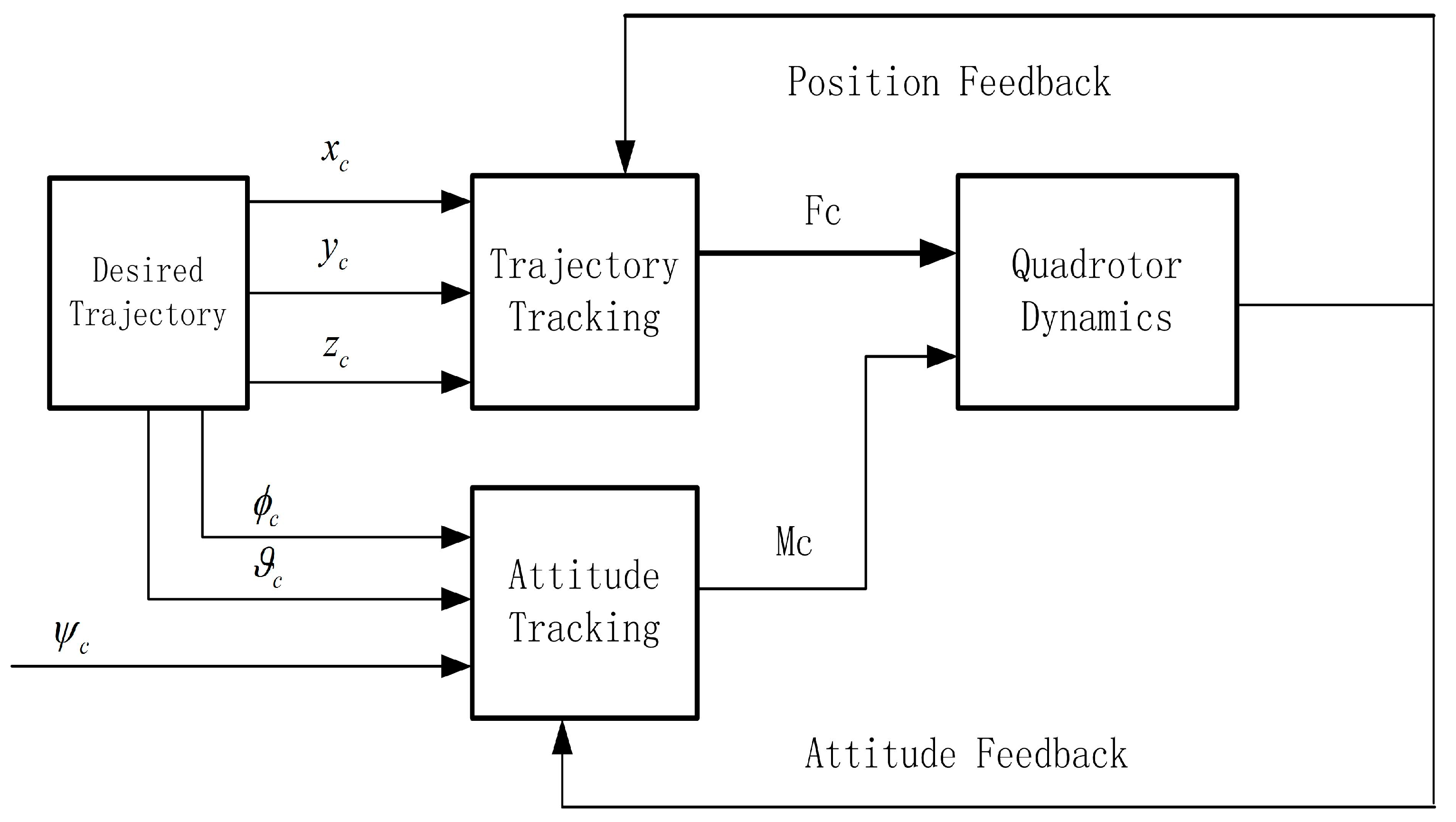
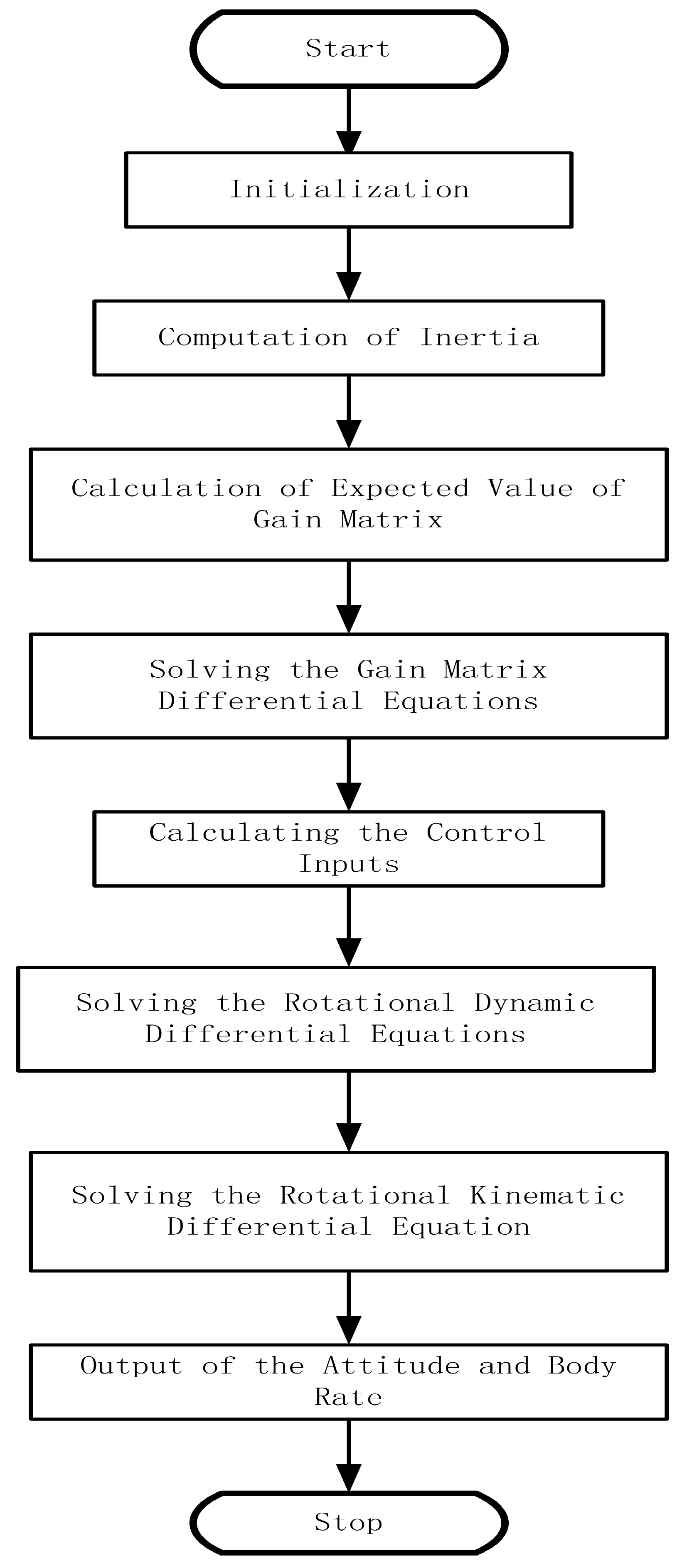
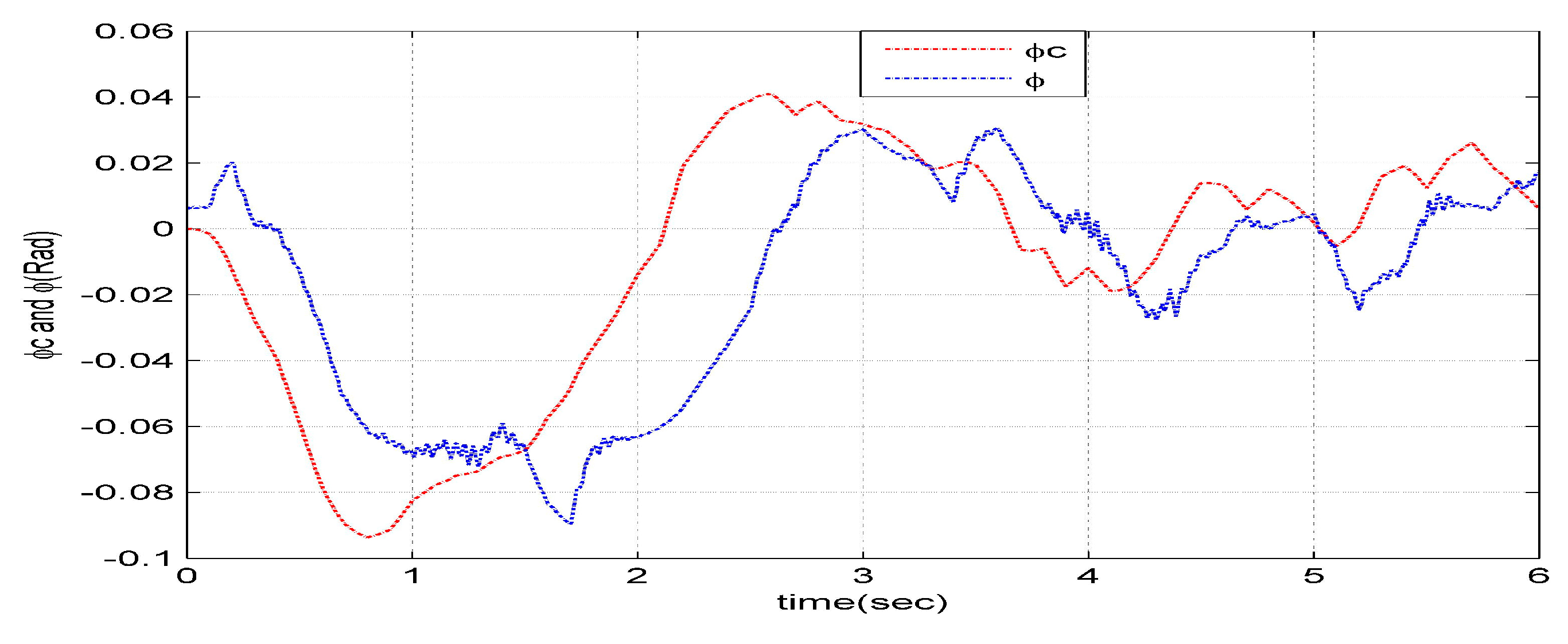

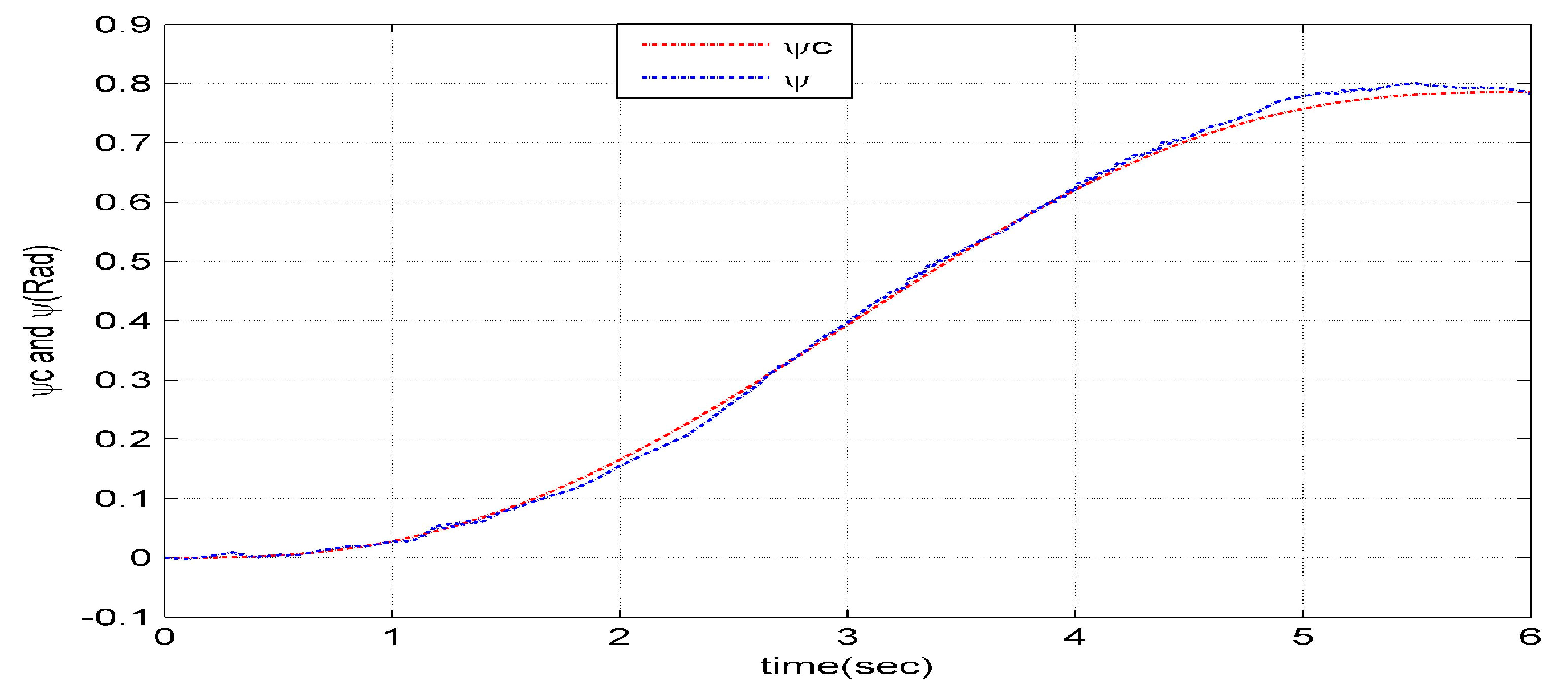
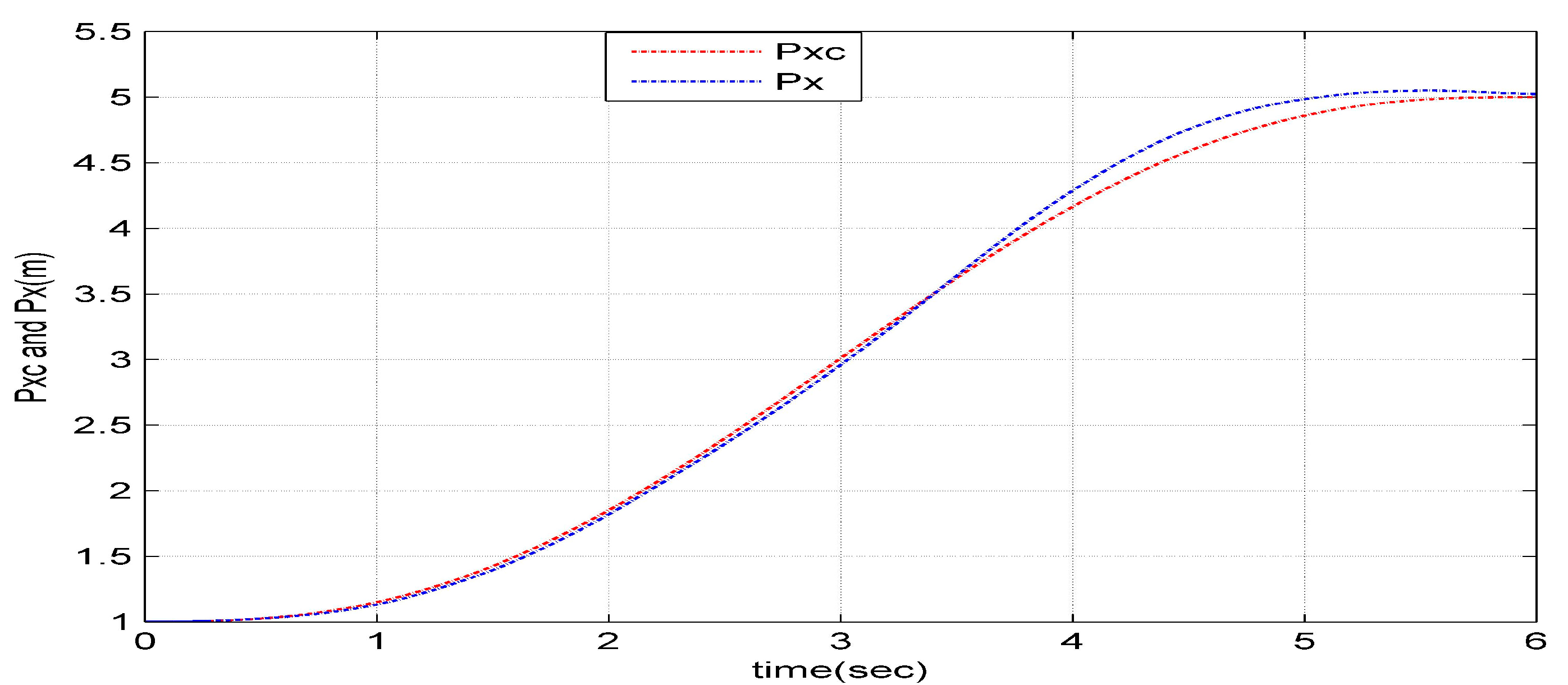
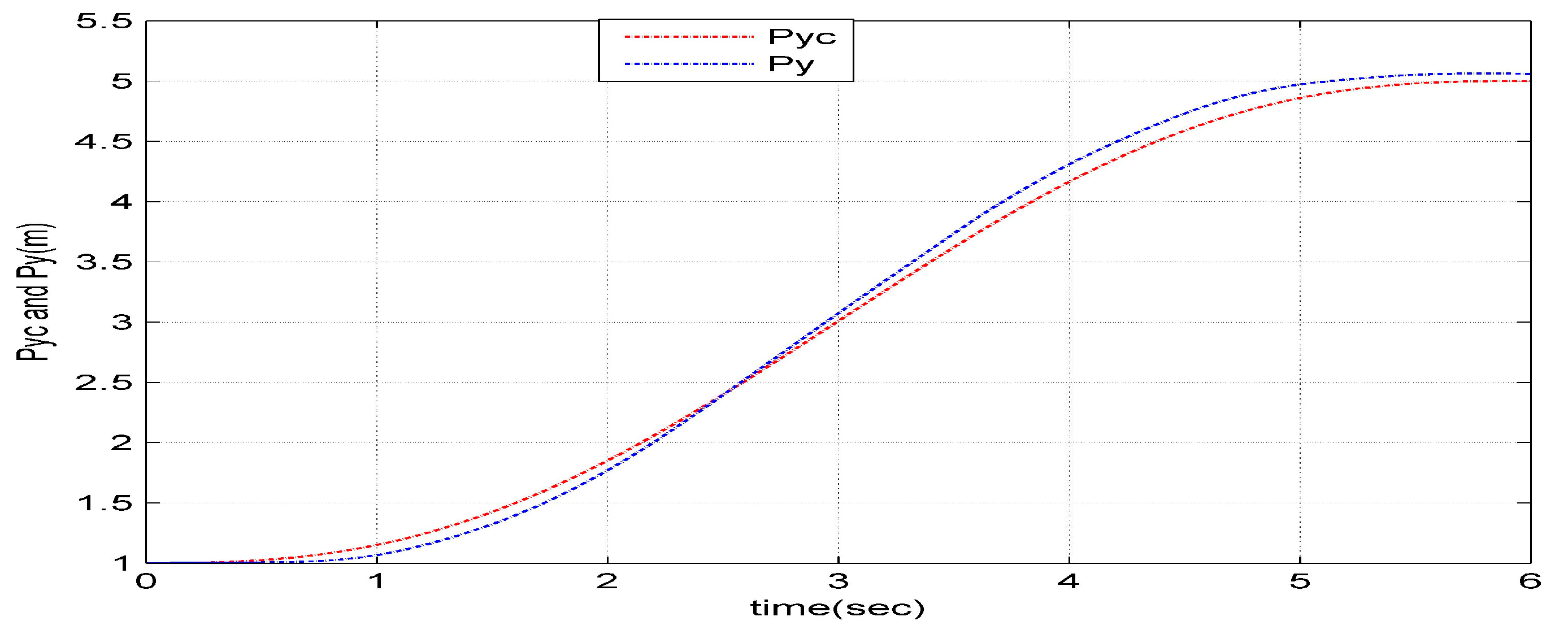

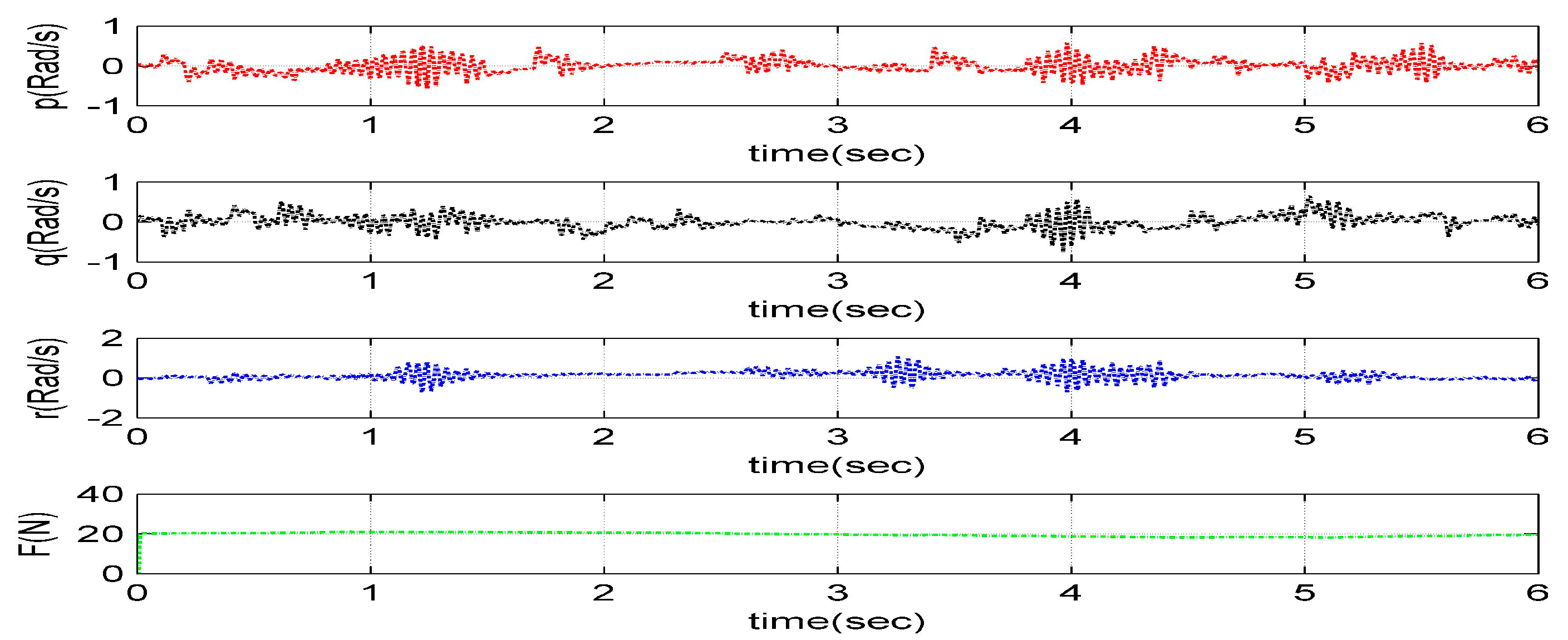
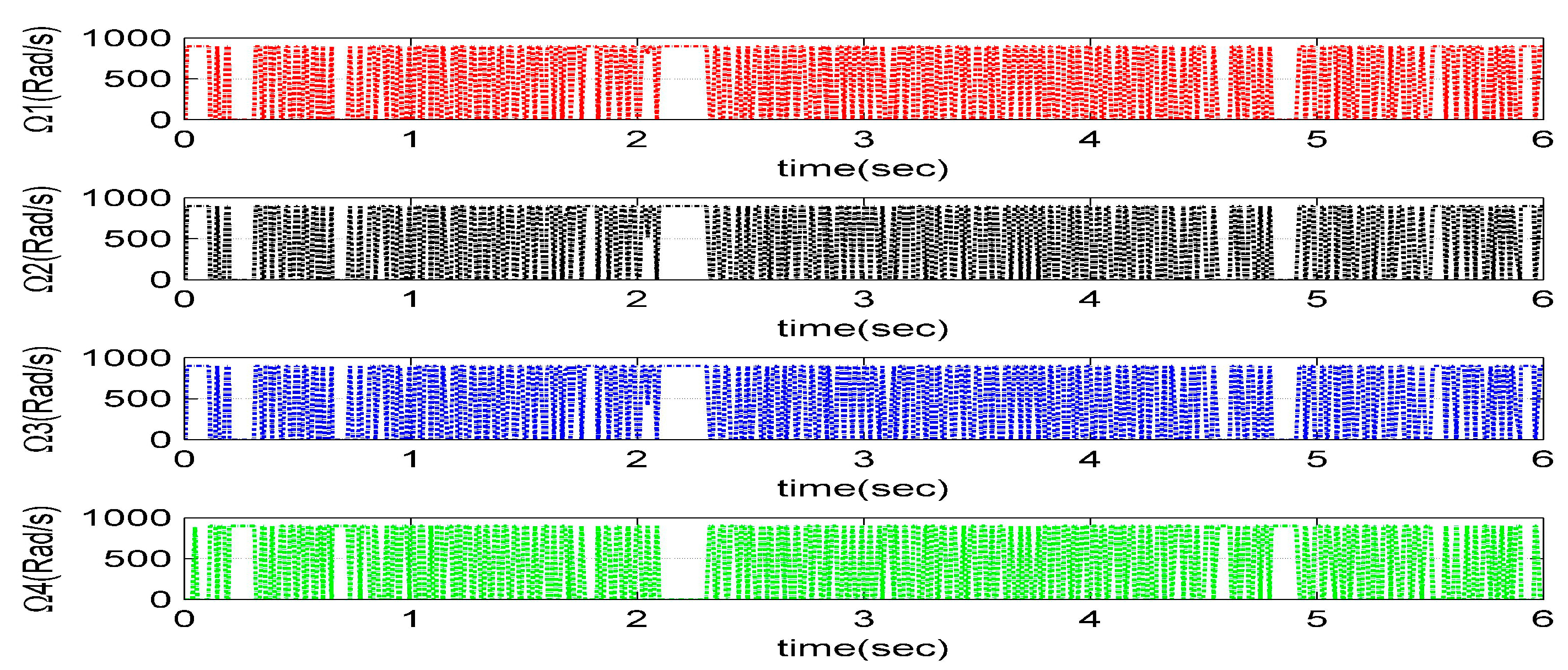
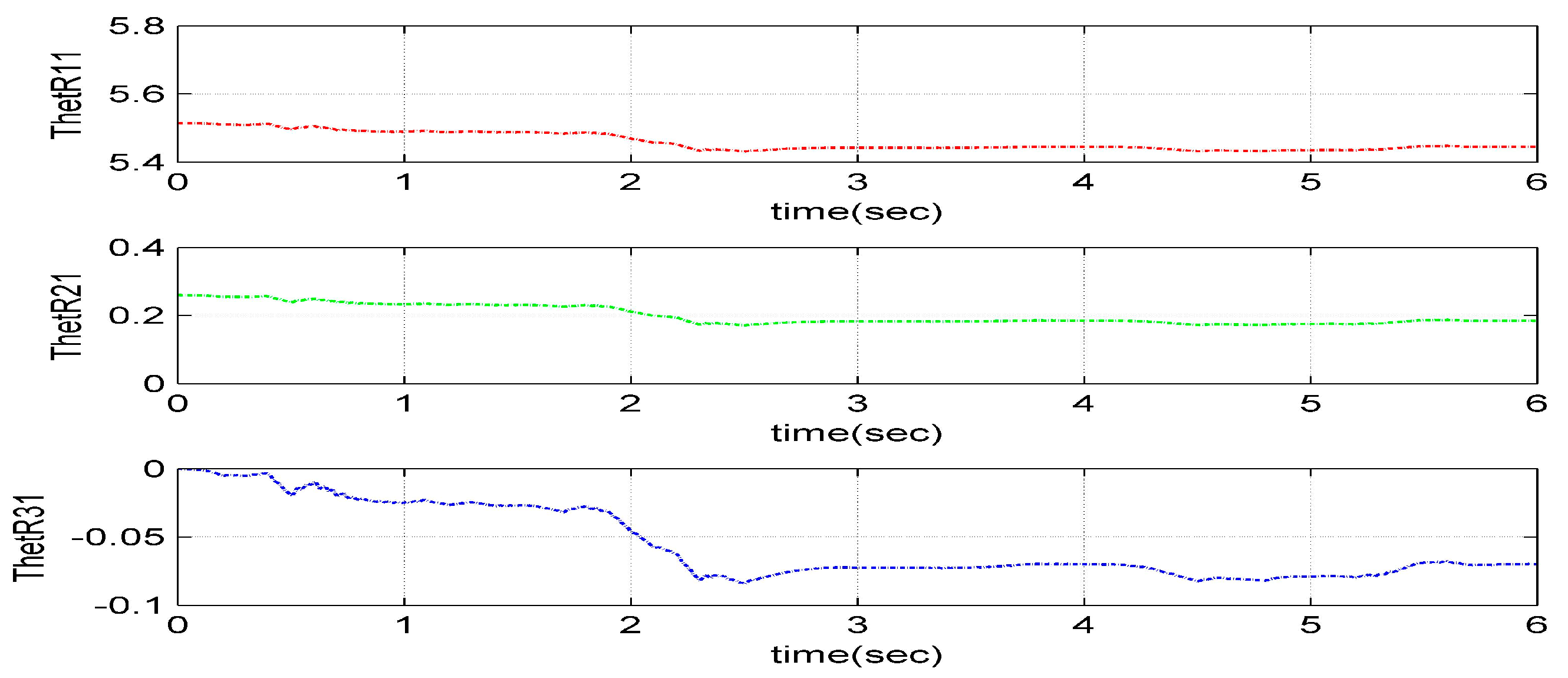
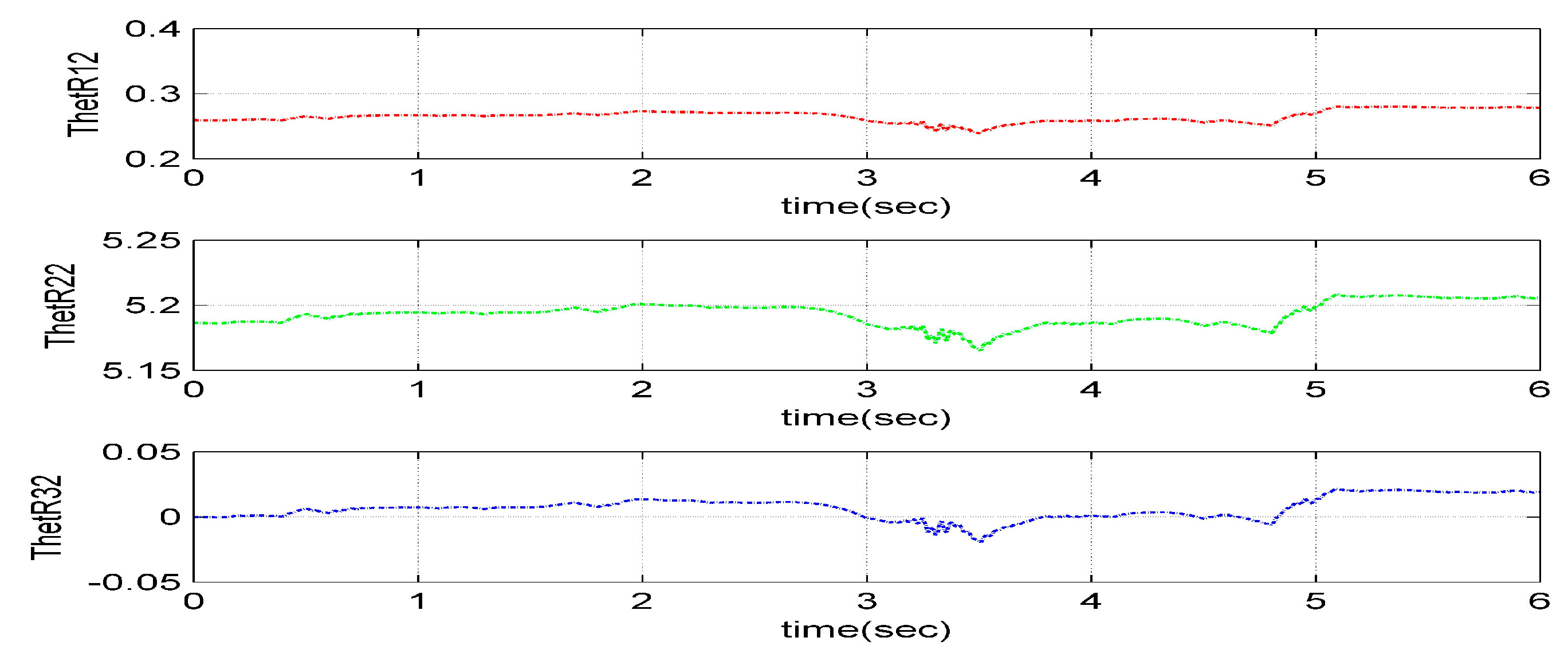
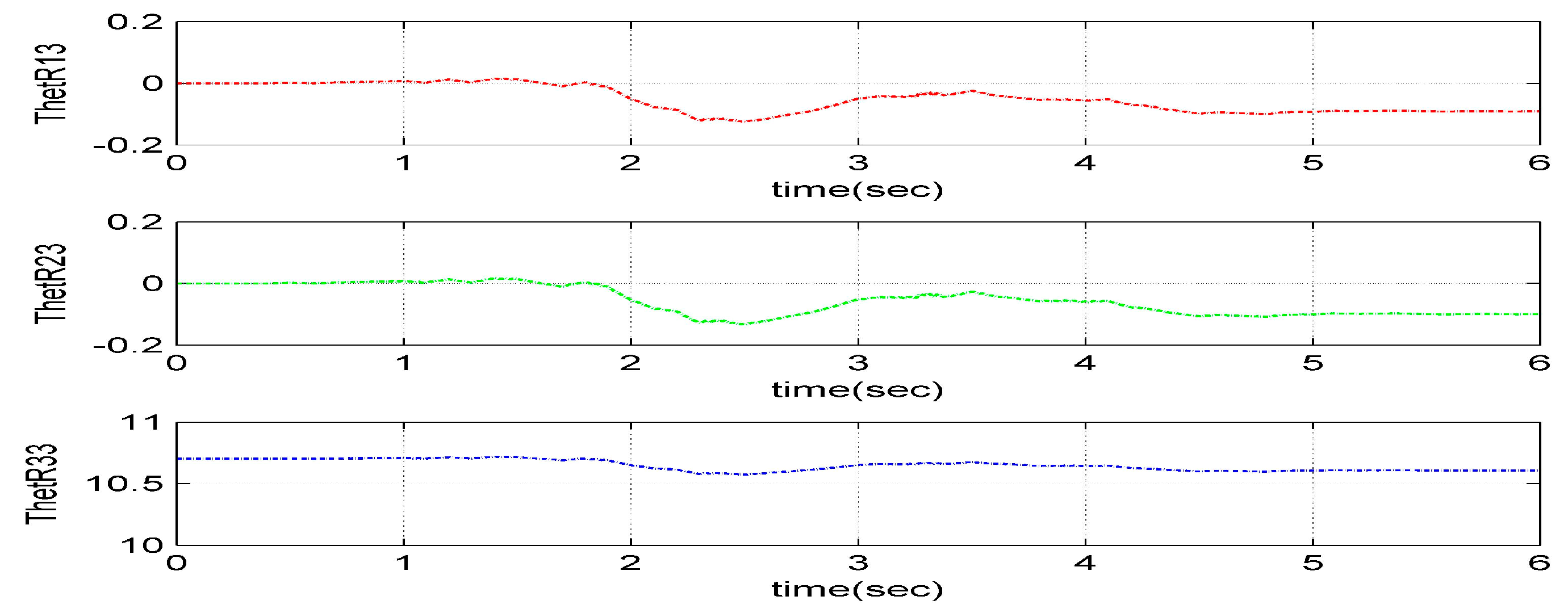
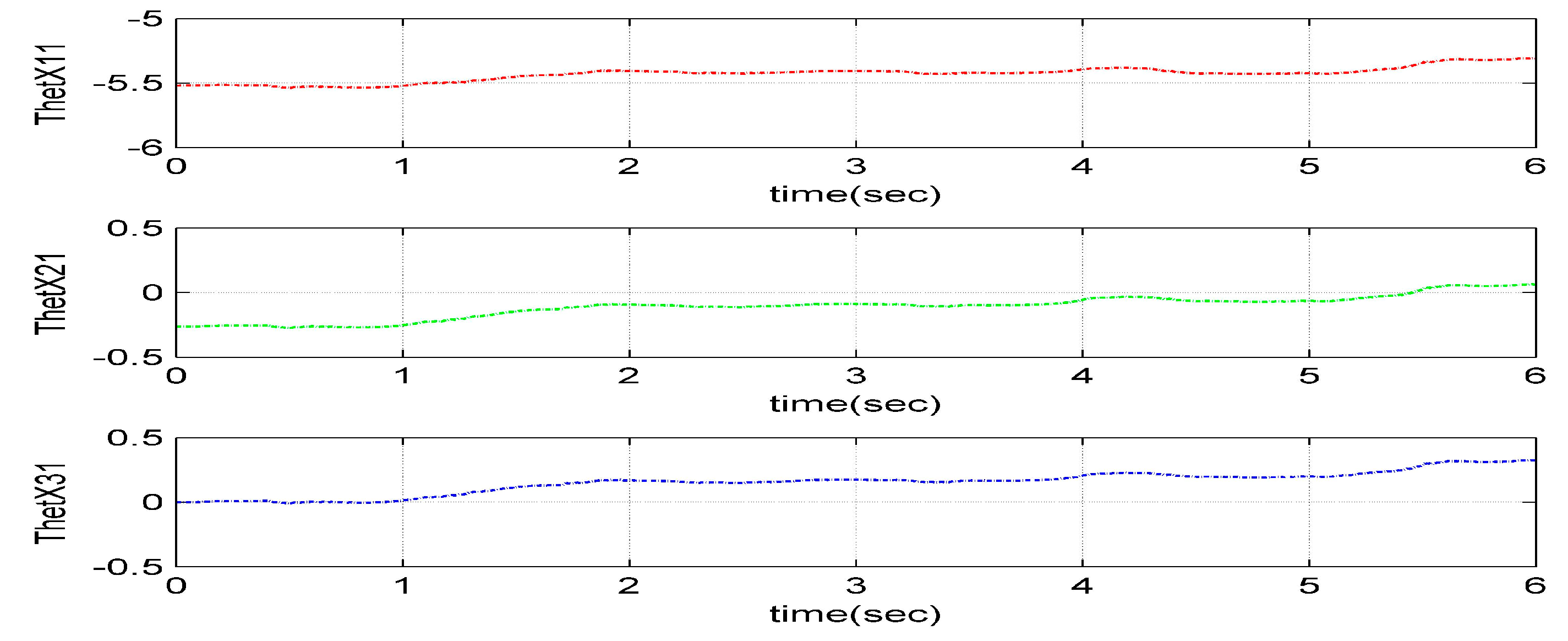
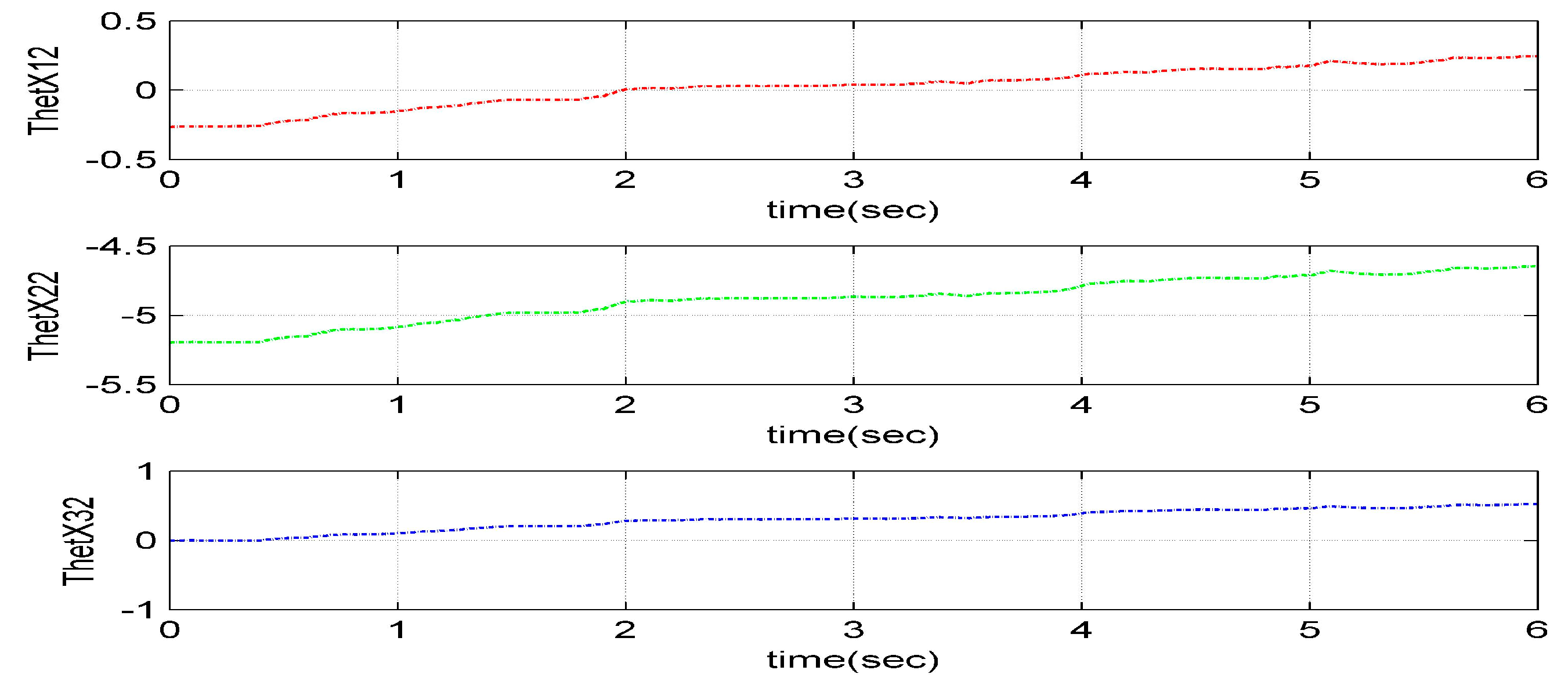
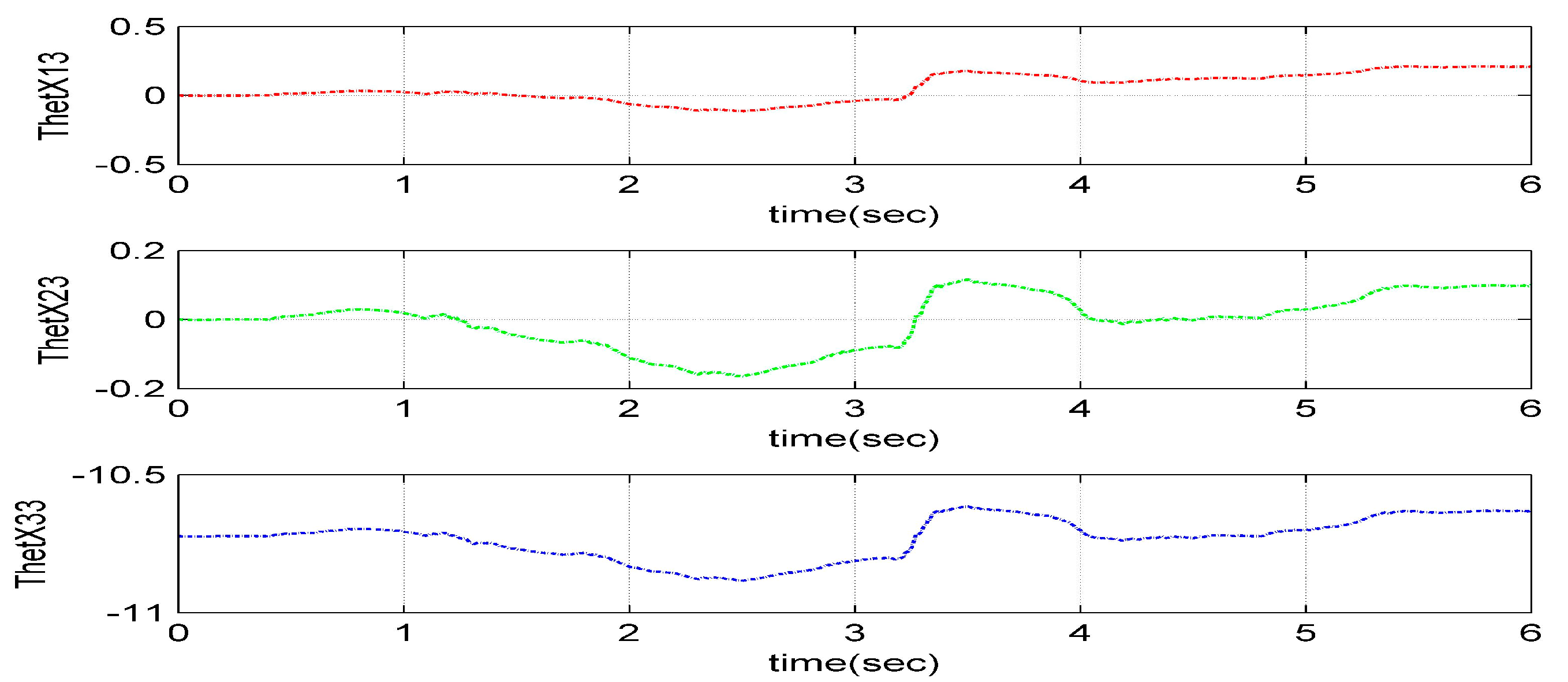
| Physical Parameter | Value |
|---|---|
| Mass of motor on the rotor | 60 g |
| Mass of driving motor | 80 g |
| Length of arm | 40 cm |
| Displacement of arm(max) | 20 cm |
| Mass of arm | 30 g |
| Mass of battery | 400 g |
| Mass of ECS | 25 g |
| Mass of payload | 250 g |
| Physical Parameter | Value |
|---|---|
| kgm2 | |
| kgm2 | |
| kgm2 | |
| kgm2 | |
| 0 | |
| kgm2 |
| Parameter | ||||
|---|---|---|---|---|
| 0.2 m | 2~6 | −0.5~1.0 | −0.5~0.5 | |
| 0.2 m | 2~6 | −0.5~1.0 | −0.5~0.5 | |
| 0.2 m | 2~6 | −0.5~1.0 | −0.5~0.5 | |
| 0.1 rad | 2~6 | −0.5~1.0 | −0.5~0.5 | |
| 0.15 rad | 2~6 | −0.5~1.0 | −0.5~0.5 | |
| 0.2 rad | 2~6 | −0.5~1.0 | −0.5~0.5 |
Disclaimer/Publisher’s Note: The statements, opinions and data contained in all publications are solely those of the individual author(s) and contributor(s) and not of MDPI and/or the editor(s). MDPI and/or the editor(s) disclaim responsibility for any injury to people or property resulting from any ideas, methods, instructions or products referred to in the content. |
© 2024 by the authors. Licensee MDPI, Basel, Switzerland. This article is an open access article distributed under the terms and conditions of the Creative Commons Attribution (CC BY) license (https://creativecommons.org/licenses/by/4.0/).
Share and Cite
Liu, Z.; Chen, G.; Xu, S. Modeling and Control of Reconfigurable Quadrotors Based on Model Reference Adaptive Control. Aerospace 2024, 11, 687. https://doi.org/10.3390/aerospace11080687
Liu Z, Chen G, Xu S. Modeling and Control of Reconfigurable Quadrotors Based on Model Reference Adaptive Control. Aerospace. 2024; 11(8):687. https://doi.org/10.3390/aerospace11080687
Chicago/Turabian StyleLiu, Zhiping, Guoshao Chen, and Shuping Xu. 2024. "Modeling and Control of Reconfigurable Quadrotors Based on Model Reference Adaptive Control" Aerospace 11, no. 8: 687. https://doi.org/10.3390/aerospace11080687
APA StyleLiu, Z., Chen, G., & Xu, S. (2024). Modeling and Control of Reconfigurable Quadrotors Based on Model Reference Adaptive Control. Aerospace, 11(8), 687. https://doi.org/10.3390/aerospace11080687







